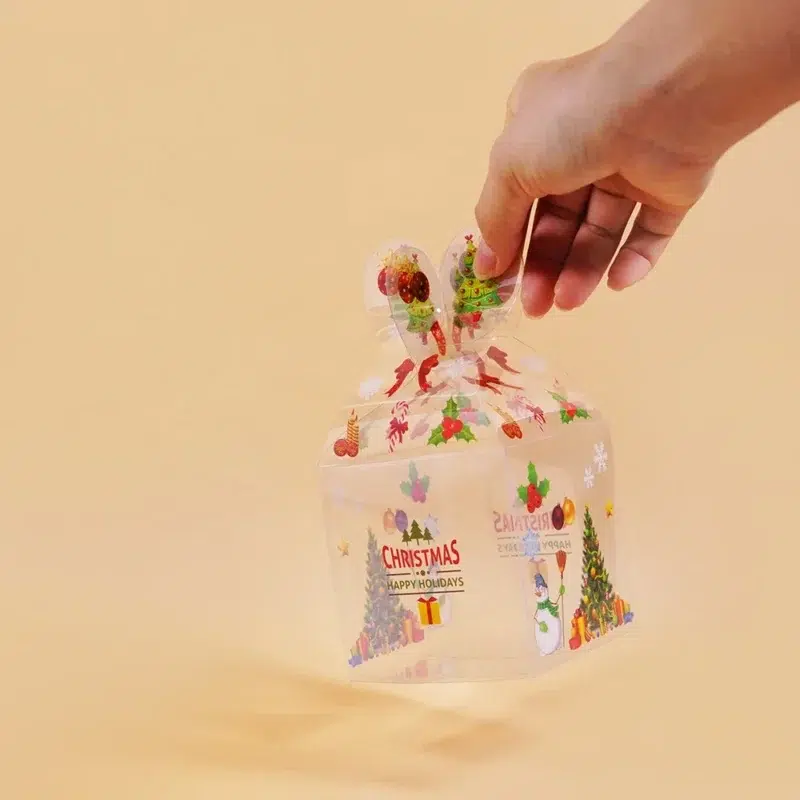What is the Clear Plastic Used in Packaging? A Deep Dive into Acetate and Its Alternatives
When you unbox a new gadget, admire a luxury cosmetic, or pick up a beautifully presented gift, you often encounter a clear, rigid plastic that showcases the product perfectly. This isn’t your average flimsy plastic wrap. So, what exactly is this crystal-clear material that elevates packaging from ordinary to exceptional?
The most common answer is Acetate, specifically Cellulose Acetate. However, for a complete picture, it’s essential to understand how it compares to other clear packaging plastics.
1. The Star Performer: Cellulose Acetate
Often referred to simply as "acetate" in the packaging industry, this material is the gold standard for high-clarity, rigid boxes and inserts.
What it is: A plant-based plastic derived from cellulose (often from wood pulp or cotton), making it more biodegradable than many petroleum-based alternatives. It’s known for its exceptional glass-like clarity and high gloss finish.
Key Characteristics:
Crystal Clarity & Gloss: Provides a premium, high-end look that makes products more appealing.
Excellent Stiffness & Durability: Offers structural integrity for boxes, lids, and dividers, protecting products during shipping and handling.
Ease of Customization: Can be easily die-cut into various shapes, printed on, or laminated with branding materials.
Good Chemical Resistance: Resists oils and greases, making it suitable for a range of products.
Best For:
Rigid Gift Boxes (e.g., for cosmetics, tech accessories, candles)
Blister Packs & Clamshells for secure retail display
Acetate Sheet Protectors within cardboard packaging to create a “window”
Premium Product Inserts and stabilizers
2. The Common Alternatives: PET, PVC, and PP
While acetate is premium, other plastics are used for different reasons, such as cost or flexibility.
PET (Polyethylene Terephthalate) or APET (Amorphous PET):
What it is: The same material used for water and soda bottles. APET is the rigid, clear form used for packaging.
Vs. Acetate: PET is very durable and cost-effective but may not achieve the same level of optical clarity and premium “feel” as acetate. It’s excellent for deep-drawn blisters.
Common Uses: Blister packs, clamshells, and transparent boxes for consumer goods.
PVC (Polyvinyl Chloride):
What it is: A versatile plastic that can be made rigid or flexible.
Vs. Acetate: PVC is less expensive but is increasingly avoided due to environmental concerns related to its chlorine content and difficulty in recycling. Acetate is a more eco-conscious choice.
Common Uses: Blister packs and clamshells (though being phased out by many brands).
PP (Polypropylene):
What it is: A durable and chemically resistant plastic.
Vs. Acetate: PP is rarely crystal clear; it often has a more translucent or hazy appearance. It is, however, very strong and has a high melting point.
Common Uses: Containers for products that require hot-fill processing.
3. Choosing the Right Material: Acetate vs. The Rest
How do you decide which clear plastic is right for your product? Here’s a quick guide:
Feature Acetate PET (APET) PVC Clarity & Feel Excellent (Premium) Good Good Rigidity/Stiffness Excellent Good Good Eco-Friendliness Good (Bio-based) Good (Recyclable) Poor Cost Higher Cost-Effective Cost-Effective Best Use Case High-end retail boxes, luxury packaging General blister packs, clamshells Low-cost blister packs (declining use)
The Verdict: If your goal is to create a premium unboxing experience, enhance in-store visual appeal, and communicate quality and sophistication, Acetate is the undisputed winner.
4. Why Your Brand Should Consider Clear Acetate Packaging
From a marketing and operational standpoint, acetate packaging offers tangible benefits:
Boost Sales with “See-Through” Appeal: 360-degree product visibility acts as a silent salesperson, reducing the barrier to purchase. Customers are more confident when they can see exactly what they’re buying.
Enhance Brand Perception: The substantial feel and brilliant clarity of acetate signal a high-value product, justifying a premium price point.
Improve E-commerce Performance: In an online world, stunning, “Instagrammable” packaging leads to unboxing videos and social shares, providing free marketing and building community.
Protect Your Product Investment: The rigidity of acetate boxes ensures your products arrive in perfect condition, reducing returns and damage claims.
Conclusion: Is Acetate the Right Choice for You?
So, what is the clear plastic used in premium packaging? While several options exist, Cellulose Acetate stands out for its unparalleled clarity, rigidity, and premium aesthetic.
“Clear acetate boxes do triple duty: they protect products like armor, display them like museum pieces, and align with ecological values—all while remaining cost-effective.”
Ask yourself these questions:
Is my product's visual appeal a key selling point?Am I targeting a mid-to-high-end market?Do I want to create a memorable unboxing experience?
If you answered “yes,” then investing in custom clear acetate packaging is a strategic move that will protect your product, elevate your brand, and captivate your customers.
Ready to showcase your products in the best light? Explore our custom acetate packaging solutions today and transform your presentation.






